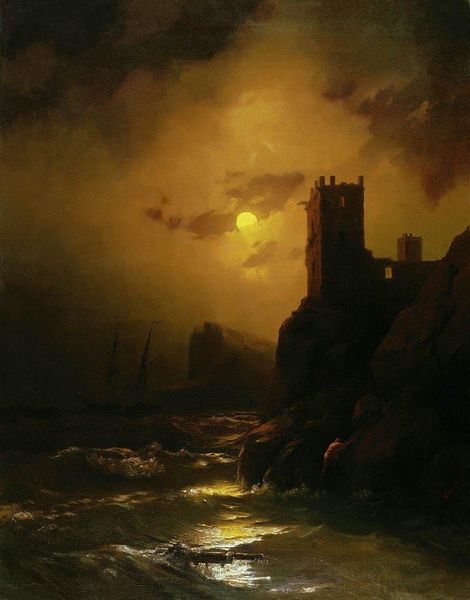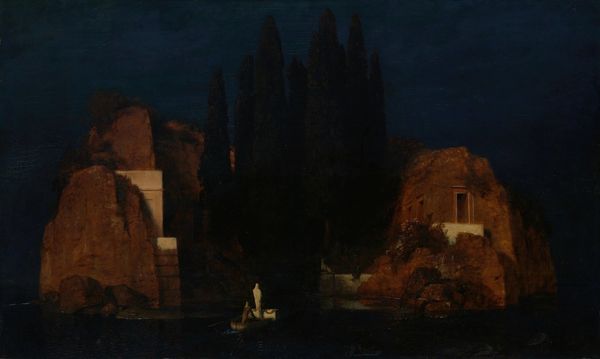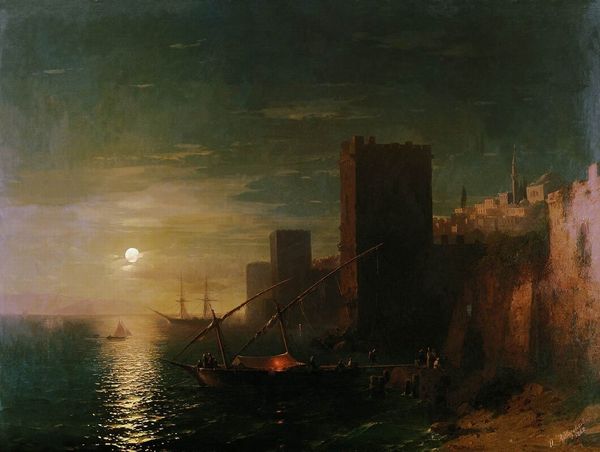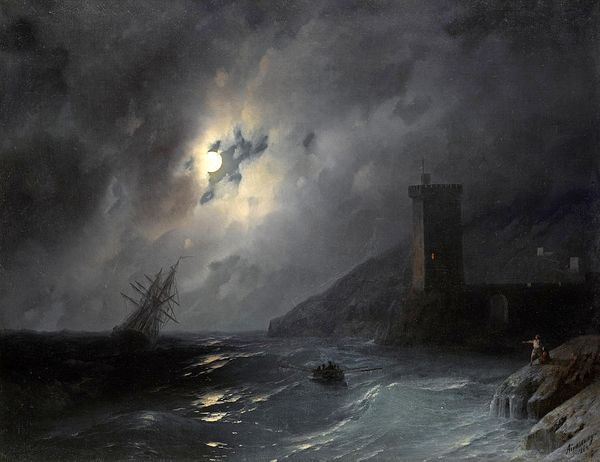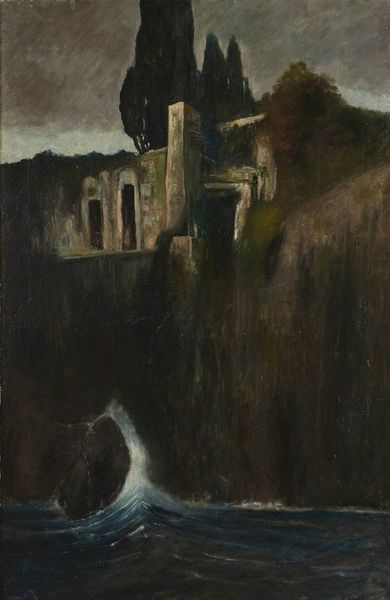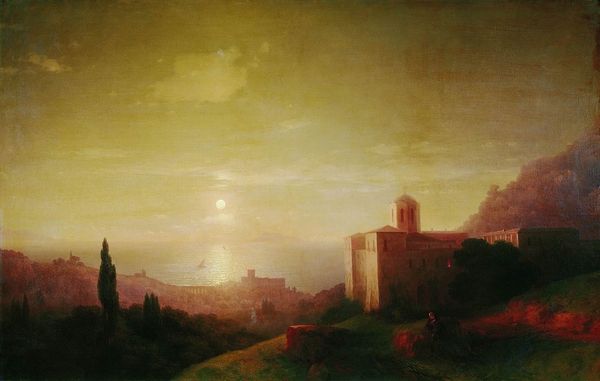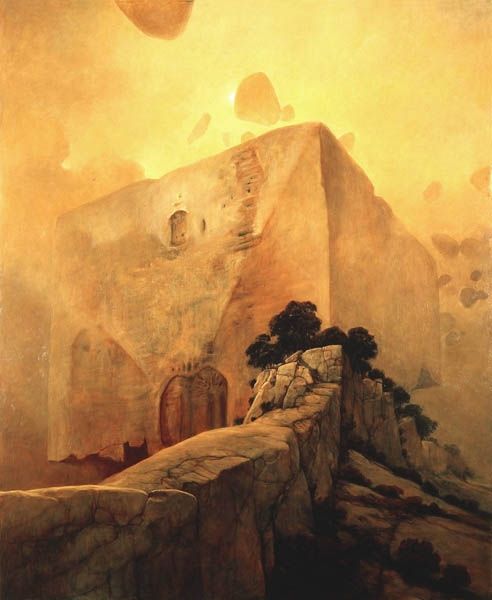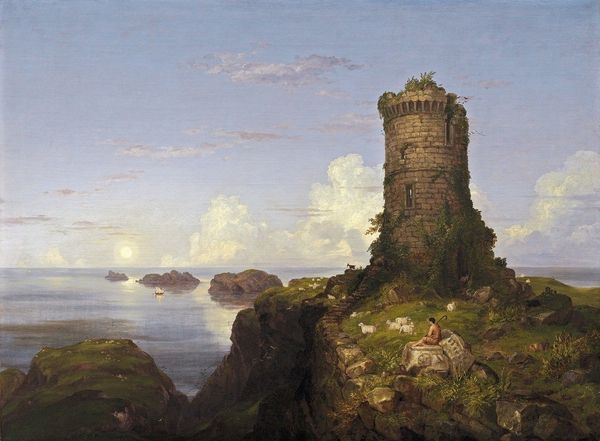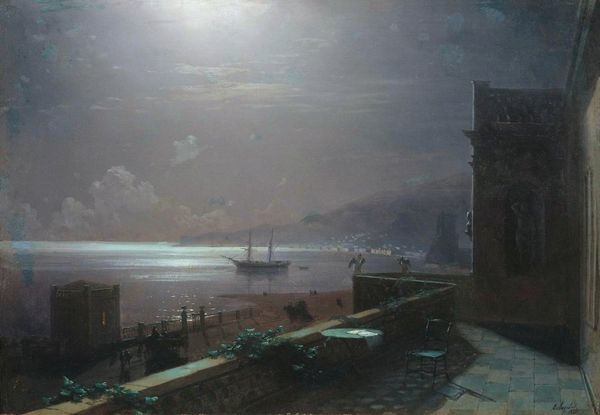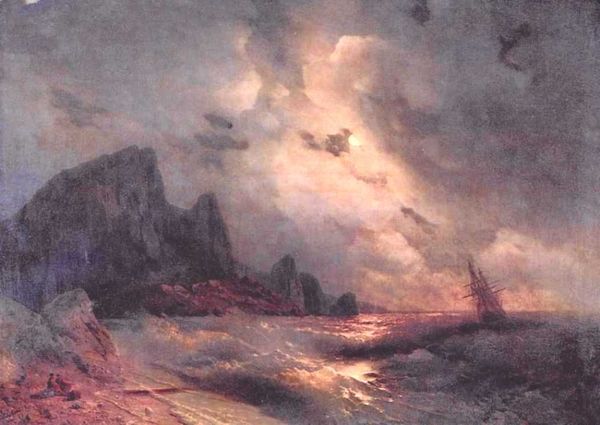
Copyright: Public Domain: Artvee
Editor: This painting, "Ruin by the Sea," by Arnold Böcklin, painted in 1881, certainly has a melancholic mood. Looking at how the oil paint renders the crumbling architecture, I'm curious – what is the significance of this ruin in your eyes? Curator: Böcklin presents us with the endpoint of architectural creation; notice the way the paint itself mimics the degradation of the stone. The production, use and eventual abandonment of building materials signifies cycles of civilization and their relationship to natural forces like the sea. Are we invited to mourn what was lost, or to question the value placed on permanence itself? Editor: So you're saying the very substance of the painting contributes to its message? It's not just the *image* of a ruin, but the *materials* *become* the ruin? Curator: Exactly! Böcklin manipulates our perception, dissolving the hierarchy between high art and 'low' materiality. Consider how traditional historical painting focused on triumphant scenes, reinforcing power structures. Here, labor and construction meet decay; Böcklin forces a confrontation with material reality and questions what’s left behind. Does seeing the work through a lens of material processes shift its meaning for you? Editor: It certainly does. I was initially drawn to the Romanticism of the piece, the grand ruin and dramatic light. Now, thinking about the effort it took to create these structures, and then the labour needed to *represent* its downfall in paint... it highlights the futility of so much human endeavor. Curator: And in the context of the 19th century, marked by industrial expansion and material excess, Böcklin perhaps offers a cautionary tale on the impermanence of our material world. Editor: I appreciate how analyzing the materials used, and the way they're handled, provides such a fresh perspective, especially given the historical context. Curator: Indeed, and reflecting on this piece allows us to consider the long relationship between creation, consumption and ruin.
Comments
No comments
Be the first to comment and join the conversation on the ultimate creative platform.
